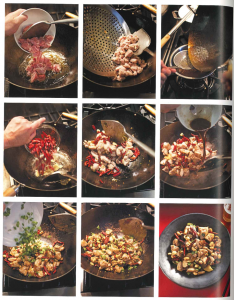Pumpkin Chocolate Loaf
An Introduction
Each year of my childhood, autumn brought many things: cooler weather, school, anticipation for the holidays, and perhaps most important, the return of my mother’s pumpkin bread. Once October rolled around, my mom churned out loaf after loaf of her famous bread: perfectly moist, wonderfully spiced, just the right breakfast for chilly fall mornings. After 18 years of the same fall-time tradition, one of the most bizarre parts of my transition to college this year was a sudden and severe lack of pumpkin bread. Thus, this past fall, I gathered my own ingredients for the first time and set out to make my own batch of pumpkin bread. With my roommate to help me, I got the keys to my dorm kitchen and began my work.
Halfway into preparation, my roommate posed an idea which changed my viewpoint on the recipe completely: why not add some chocolate chips? With enough batter to make 10 loaves, I figured we might dare to make the recipe even better. Therefore, I added half a cup of chocolate chips to half of my batter, we baked the bread normally, and anxiously awaited what was to come.
After the loaves baked and cooled, we each cut ourselves a slice. I was greeted with not only the taste of my childhood, but also a subtle extra layer of sweetness: the decadent chocolate. From this point forward, I knew one thing: pumpkin bread would never be the same.
Supplies
10 mini aluminum foil pans [Can be bought at WalMart]
2 large mixing bowls
mixing spoons
Baker’s Joy
cookie sheet [optional]
gravy ladle [optional]
Ingredients
Dry:
3 c. white sugar
3 tsp. baking soda
3 tsp. cinnamon
1 tsp. nutmeg
3.5 c. all-purpose flour
Wet:
1 c. oil of choice [we use canola]
2/3 c. water
4 eggs [pre-beaten; slightly fluffy]
2 c. canned pumpkin puree
1 c. mini chocolate chips
Steps
Mix together white sugar, baking soda, cinnamon, nutmeg and all-purpose flour in a large mixing bowl. In a separate bowl, thoroughly mix oil, water, eggs and pumpkin puree. Adding in a cup of the dry mixture at a time, gradually mix the two bowls together. After the dry mixture is well incorporated into the wet mixture, add in the mini chocolate chips. Once mixed together, place the aluminum pans on a cookie sheet and grease the pans. Using a gravy ladle, place the batter into the pans, leaving approximately ¼ of an inch at the top of the pans. Place the pans into the oven and bake at 350 degrees Fahrenheit for 25 to 30 minutes or until a toothpick comes out of the loaf clean. Wait 20 minutes for the loaves to cool and serve each slice with a pat of butter.

 While I think most recipes are of good structure, there are definitely some out in the world that are not easy to follow. For instance, when a recipe is out of order it is expected for the audience to know how to make the dish when most of the time, the audience members trying to make the dish do not even make food following recipes very often. Many times there are hand-written books for recipes that are given to people who want to cook. A key issue with this sometimes is that handwriting may be bad and hard to read. Luckily, I believe that there are more good recipe books, videos and ways to share recipes out there than there are bad. I enjoy authors sharing their recipes very much as I think it is very interesting and fun to make new things. I look forward to making more in the near future thanks to this class!
While I think most recipes are of good structure, there are definitely some out in the world that are not easy to follow. For instance, when a recipe is out of order it is expected for the audience to know how to make the dish when most of the time, the audience members trying to make the dish do not even make food following recipes very often. Many times there are hand-written books for recipes that are given to people who want to cook. A key issue with this sometimes is that handwriting may be bad and hard to read. Luckily, I believe that there are more good recipe books, videos and ways to share recipes out there than there are bad. I enjoy authors sharing their recipes very much as I think it is very interesting and fun to make new things. I look forward to making more in the near future thanks to this class!